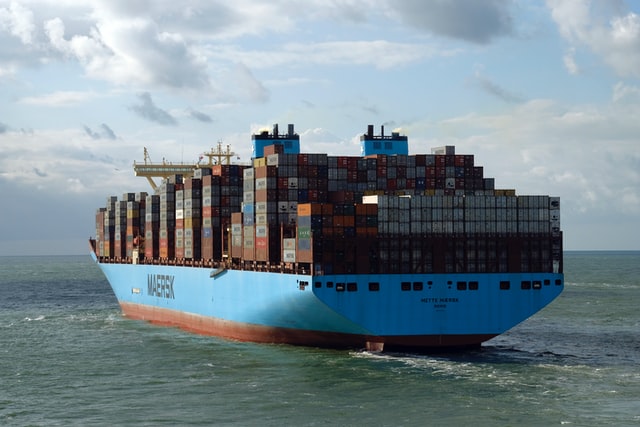-
Revenue in 2020 rose 2% to US$39.7 billion compared to 2019 while EBITDA ballooned 44% to $8.2 billion
-
Earnings grew during every quarter of 2020, beginning with negative impact from COVID-19 in the first half to a rebound in the fourth quarter
-
The demand surge in the second half of the year, while creating supply chain bottlenecks, also led to higher rates that contributed about $1.5 billion to Maersk’s results
-
For full-year 2021, guidance is for an underlying EBITDA in the range of $8.5 billion to $10.5 billion, compared to $8.3 billion in 2020
Container logistics company Maersk said 2020 was another year of “solid progress” as it grew its revenue 2.2% to US$39.7 billion compared to 2019 while earnings before interest, taxes, depreciation and amortization (EBITDA) ballooned 44% to $8.2 billion.
“Despite low volumes during most of 2020, profitability grew throughout the first nine months and ended the year with record Q4 results in Logistics and Terminals, while Ocean delivered an exceptional quarter driven by the increased volumes and current, temporary supply chain disruptions,” the Danish transportation giant said.
Soren Skou, group CEO, said that “2020 will forever be remembered for the COVID-19 pandemic that negatively impacted our lives, jobs, businesses and the global economy.” Despite this, the company delivered earnings growth during every quarter of 2020, despite very different market conditions, beginning with negative COVID-19 impact in the first half to a rebound in the fourth quarter.
The company acknowledged that the demand surge in the second half of 2020, while creating supply chain bottlenecks, including vessel and container shortages, also led to higher rates that contributed about $1.5 billion to the results.
It said ocean shipping further improved its performance during the period by focusing on costs, agile capacity management and launching new digital offerings.
The core “Ocean” container shipping business saw the number of containers carried fall over the year from 13,296 forty-foot equivalent units in 2019 to 12,634 forty-foot equivalent units in 2020, yet it was the margin on those containers carried that delivered the profits.
Over the same period, average freight rates for a forty-foot unit rose from $1,853 in 2019 to $2,000 in 2020. That said, the fourth quarter numbers describe a changing market with “exceptional demand surges from recovery especially in China-US trades” leading to “headhaul volumes increasing by 4.6% driven by a 19% increase in North America and lower volumes on North-South.” The result was profit margins firming from 15.4% in 2019 to 22.4% in FY2020. For the whole year EBITDA was $6.5 billion.
Logistics & services grew to $7 billion, compared to $6.3 billion last year, and EBITDA improved 110% to $454 million, supported partly by improved performance in intermodal, air freight forwarding and warehousing and distribution.
Gateway terminals saw a decrease in revenue of 3.9% to $3.2 billion in 2020 because of lower volumes due to impact from the pandemic. But EBITDA increased by 8.3% to $989 million, reflecting an improved EBITDA margin to 31%, driven by higher revenue per move and cost reductions in several terminals.
For its 2021 outlook, Maersk said it expects another year of earnings growth even as “there continues to be a high degree of uncertainty related to the impact from COVID-19 on the economic growth and global demand patterns.”
“We expect the current, exceptional situation to continue into 2021 with Q1 to be stronger than Q4, followed by a normalisation thereafter,” it said.
For full-year 2021, it announced guidance of an underlying EBITDA in the range of $8.5 billion to $10.5 billion, compared to $8.3 billion in 2020. EBIT guidance is $4.3 billion to $6.3 billion.
Ocean is expected to grow in line with the global container demand at an expected 3% to 5% in 2021, with the highest growth seen in the first half-year.
Photo by Andrey Sharpilo on Unsplash





